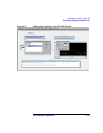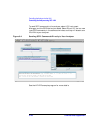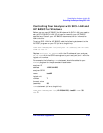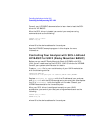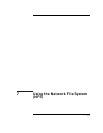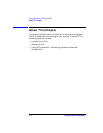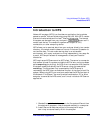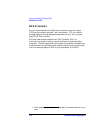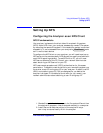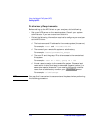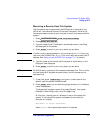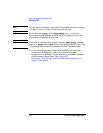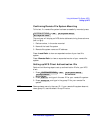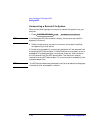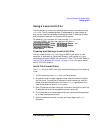
LAN Interface Supplement 7-5
Using the Network File System (NFS)
Setting Up NFS
Setting Up NFS
Configuring the Analyzer as an NFS Client
NFS Fundamentals
Your analyzer implements the client side of the network file system
(NFS). As an NFS client, your analyzer accesses the remote
1
file system
by mounting the remote file system. If the remote file system is mounted
successfully, it can be accessed from your analyzer's menu
as if it were a local
2
device.
To configure the NFS client on your analyzer, you will need to set up an
NFS server on the remote system. NFS servers are readily available with
most UNIX operating systems. To use NFS with a PC, you will need
NFS server software for the PC. Consult your network administrator
about obtaining an NFS server for your PC.
NFS uses remote procedure call (RPC) authentication for file access
permissions. To be able to read and write to your remote file system, you
must enter a user ID and a group ID for your analyzer. A default user ID
(2001) and a default group ID (100) are assigned for you before the
analyzer is shipped. If the defaults do not work for you, consult your
network administrator about obtaining a user ID and group ID.
1. Remote files and directories are part of a file system different than
the analyzer file system—they are stored remotely in a computer.
2. Local files and directories are part of the analyzer file sys-
tem—they are stored locally within the analyzer.
Save/Recall



